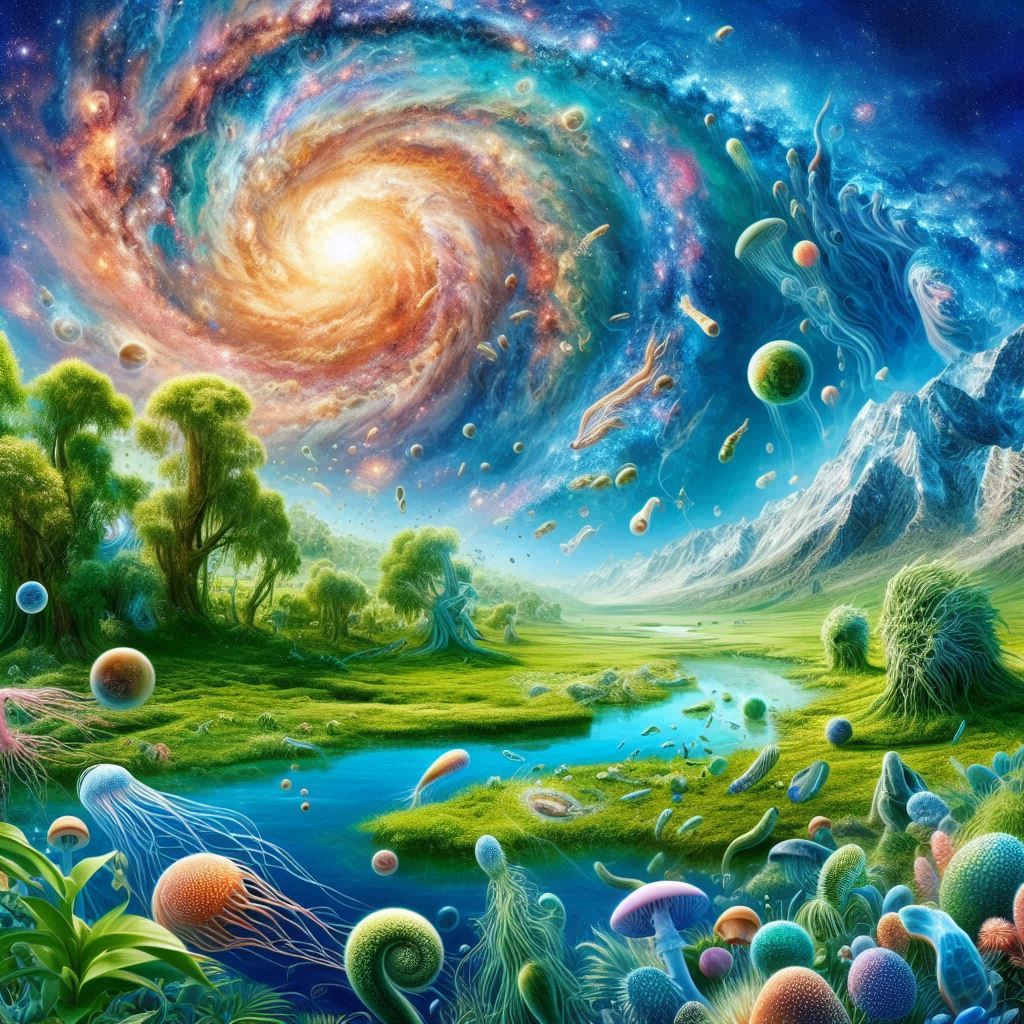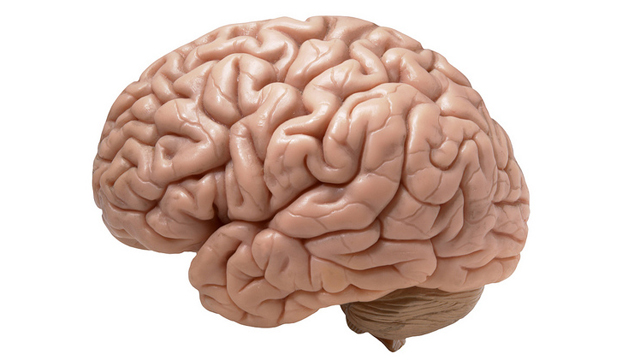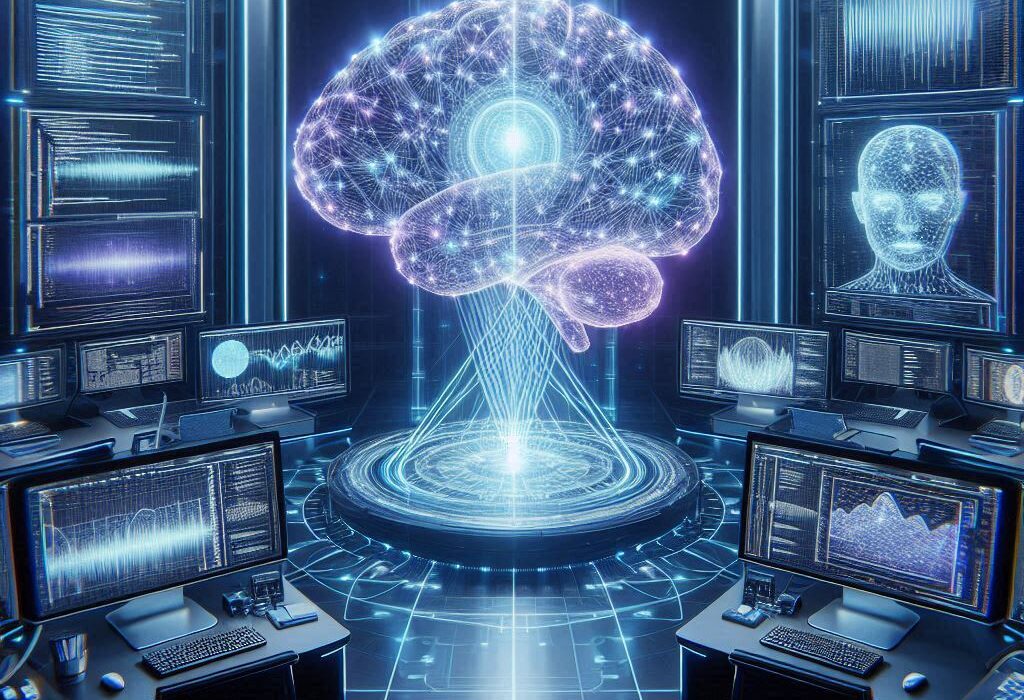In the vast silence of the cosmos, a single blue planet teems with life. From the smallest bacteria hidden beneath Antarctic ice to the vibrant coral reefs of the tropics and the consciousness housed in the human brain, Earth brims with complexity. And all of it—every tree, every tiger, every thought—can be traced back to one foundational mystery: how did life begin?
This question has haunted humanity for millennia. Ancient myths spun tales of divine breath and cosmic eggs. Philosophers speculated, theologians argued, and poets imagined. But in the last century, a new force entered the conversation—science, with its experiments, microscopes, and equations. And though the answers are still unfolding, we now stand closer than ever to glimpsing life’s first flicker.
The origin of life is not just a tale of the distant past. It’s a story about chemistry becoming biology, about simplicity giving rise to complexity, and ultimately about how non-living matter assembled itself into the phenomenon we call life. This is the greatest story ever told—one that spans oceans, volcanoes, meteorites, and the first fragile cells. It’s the story of where we came from.
The Prebiotic Earth: A Cradle for Chemistry
To understand how life began, we must begin with the environment in which it could first arise. Picture Earth about 4.5 billion years ago. It was not the blue-green haven we see today. The young Earth was a violent, hostile place. Oceans of molten rock seethed across its surface, volcanoes erupted constantly, and meteorites rained from the sky, pounding the crust and delivering cosmic materials from far-off corners of space.
Yet in this chaos lay the seeds of life. As the Earth cooled, liquid water accumulated, forming the first oceans. These were not calm pools but vast, turbulent cauldrons rich in dissolved minerals, gases, and energy. Ultraviolet radiation from the sun, electric storms in the sky, and heat from the Earth’s core added the sparks needed for chemical transformations.
Scientists call this period the prebiotic Earth—a time before biology, when the only players were physical forces and simple molecules. But somehow, within a few hundred million years of Earth’s formation, something remarkable happened: chemistry crossed the threshold into life.
Building Blocks from the Void: Molecules of Life
For life to begin, certain ingredients had to be in place. Chief among them are organic molecules, carbon-based compounds that include amino acids, nucleotides, sugars, and lipids—the basic components of proteins, DNA, RNA, and cell membranes.
One of the earliest breakthroughs in understanding how these molecules might have formed came in 1953, when scientists Stanley Miller and Harold Urey performed a now-famous experiment. They created a miniature version of early Earth’s atmosphere—a mixture of water vapor, methane, ammonia, and hydrogen—and subjected it to electrical sparks, mimicking lightning. After a week, they found that several amino acids had formed spontaneously.
This experiment stunned the scientific world. It showed that the building blocks of life could arise from non-living matter under the right conditions. Later studies expanded on this work, showing that sugars, lipids, and even nucleotides could form in similarly simulated environments. Some of these molecules may have come from space, arriving aboard meteorites rich in organic compounds—evidence of which has been found in real-life space rocks like the Murchison meteorite.
Thus, Earth was not only a chemical cauldron—it may have also been seeded from beyond.
The RNA World: The First Information-Carrying Molecule
One of the grand challenges in understanding life’s origin is solving a chicken-and-egg problem: life as we know it depends on both DNA, which stores genetic information, and proteins, which perform cellular tasks. But proteins are needed to copy DNA, and DNA is needed to make proteins. So which came first?
A groundbreaking hypothesis, known as the RNA World, proposes a third player: RNA—ribonucleic acid. Like DNA, RNA can store genetic information. But uniquely, RNA can also act as an enzyme, catalyzing chemical reactions.
In this scenario, life may have begun with self-replicating RNA molecules. Some strands of RNA can fold into specific shapes that help them copy themselves or assist in other reactions. Laboratory experiments have even produced RNA molecules capable of catalyzing their own partial replication.
These proto-RNAs wouldn’t have been perfect. Early copying would have been error-prone, giving rise to a variety of sequences—some more stable or functional than others. This variation set the stage for natural selection to begin working at the molecular level, long before full-blown cells existed.
Eventually, more efficient systems evolved—DNA took over as the primary information molecule, and proteins took over catalytic functions. But the RNA World may have been the crucial first step from chemistry to genetics.
Cellular Enclosures: Bubbles of Order in a Chaotic World
Life isn’t just a set of chemical reactions—it’s a system, a tiny, bounded world where internal conditions can be controlled and reactions coordinated. For this, something else was needed: compartmentalization.
On early Earth, simple membrane-like structures could have formed spontaneously from lipids, fatty molecules that naturally assemble into spheres in water. These spheres, called protocells, could enclose RNA and other molecules, creating a rudimentary cell.
Such protocells wouldn’t be alive in the modern sense, but they represented a critical leap: chemistry captured within boundaries. Inside these lipid bubbles, RNA could replicate more reliably, resources could be retained, and harmful substances kept out. In effect, these protocells were the first test tubes in which life’s experiments were run.
Over time, protocells may have evolved to take in nutrients, divide when they grew too large, and even exchange genetic material. Eventually, these simple units of organization gave rise to the first true cells—single-celled organisms with more stable membranes, metabolic systems, and genetic machinery.
These first living entities are believed to have been prokaryotes, primitive cells lacking a nucleus, resembling modern-day bacteria and archaea.
Metabolism First? An Alternate View
While the RNA World is widely accepted, it’s not the only hypothesis. Some scientists argue that metabolism—the chemical processes that convert energy and matter into useful forms—came first.
According to the metabolism-first model, life began not with genes, but with networks of chemical reactions that sustained themselves and gradually became more complex. These could have taken place on mineral surfaces, such as those found near deep-sea hydrothermal vents. These vents spew hot, mineral-rich water into the ocean and create gradients in temperature and chemistry that could have driven early reactions.
One version of this theory involves iron-sulfur clusters, which are known to catalyze key reactions in modern cells. If such networks could reproduce or grow more stable over time, they could have served as scaffolding for the later emergence of genetic molecules.
Perhaps, some scientists suggest, life’s origin didn’t hinge on a single spark, but on a gradual merging of multiple processes—metabolism, replication, and compartmentalization—each reinforcing the other in a kind of molecular symbiosis.
LUCA: Our Most Ancient Ancestor
Regardless of the precise pathway, there came a moment when true life emerged—an entity capable of storing information, reproducing, evolving, and interacting with its environment. From this point onward, evolution took the wheel.
Scientists refer to this hypothetical ancestor as LUCA—the Last Universal Common Ancestor. LUCA was not the first life form, but the one from which all modern life descended. It likely lived around 3.5 to 4 billion years ago and already possessed many features seen in today’s organisms: genetic code, proteins, ribosomes, membranes, and rudimentary metabolism.
By analyzing the common genes found in all living things, researchers have reconstructed aspects of LUCA’s biology. It likely lived in a hot, aquatic environment—perhaps near hydrothermal vents—and used RNA and proteins to perform life’s essential tasks. But LUCA wasn’t alone. Other lineages of early life may have existed but went extinct, leaving no trace.
From LUCA, evolution diverged. Some lineages gave rise to bacteria, others to archaea, and still others—much later—to eukaryotes, the complex cells that make up plants, animals, and humans.
The Fossil Record: Echoes from the Ancient Earth
Evidence for life’s early emergence comes not just from molecular biology but also from rocks—some of the oldest on Earth. Microfossils found in Australian and Greenland formations, dating back over 3.5 billion years, show signs of microbial mats and filament-like structures resembling modern bacteria.
Even more compelling are stromatolites, layered rock formations built by communities of microbes. These ancient living structures, still forming today in places like Shark Bay, Australia, provide a window into life’s earliest ecosystems.
Other evidence lies in chemical signatures—ratios of carbon isotopes that suggest biological activity—found in rocks over 3.8 billion years old. These whisperings from Earth’s infancy suggest that life emerged relatively quickly once the planet stabilized.
Life Elsewhere? Implications Beyond Earth
Understanding how life began on Earth has profound implications for the search for life elsewhere. If life emerged quickly here, it might also arise on other planets with similar conditions. Mars, Europa (a moon of Jupiter), and Enceladus (a moon of Saturn) are all considered potential hosts for microbial life.
Scientists are also examining exoplanets—planets orbiting other stars—for signs of atmospheres that could support life. If we detect life elsewhere, it may be based on the same principles: carbon chemistry, water, cellular compartments, and information molecules.
Alternatively, it may follow entirely different rules—using different solvents, elements, or energy sources. But by understanding life’s origin on Earth, we prepare ourselves for that greatest of discoveries: we are not alone.
The Mystery That Endures
For all our knowledge, many questions remain. We don’t yet have a definitive pathway from molecules to cells. The exact sequence of steps—the roles of RNA, metabolism, membranes, and minerals—is still being debated and researched in laboratories around the world.
Yet the progress is remarkable. We now understand that life is a natural outcome of physics and chemistry under the right conditions. It does not require divine intervention or supernatural forces—though it remains, in every sense, wondrous.
The origin of life is the ultimate detective story, written not in ink, but in atoms and ancient stones. And though the case is still open, we have uncovered enough clues to glimpse the opening chapter of the book of life.
Conclusion: From Stardust to Cells
In the end, the story of life’s origin is also the story of us. It is the story of how hydrogen born in stars became water, how carbon became chains of proteins and nucleotides, and how—somewhere in the churning oceans of a young world—those molecules learned to replicate, adapt, and evolve.
From that first cell came everything: fungi and flowers, dinosaurs and dolphins, civilizations and consciousness. The atoms in your body were once part of lifeless rock. Today, they think, feel, and dream.
Science does not diminish the mystery of life—it deepens it. With each discovery, we not only inch closer to answering the question “Where did we come from?”—we also learn to ask deeper ones: What is life? Why does the universe allow it? And what might it become?
This is not merely a scientific inquiry. It is a human one—etched into our DNA and written across the sky. For in seeking our origin, we come to understand ourselves—not just as creatures of biology, but as beings shaped by the very laws of the cosmos.






